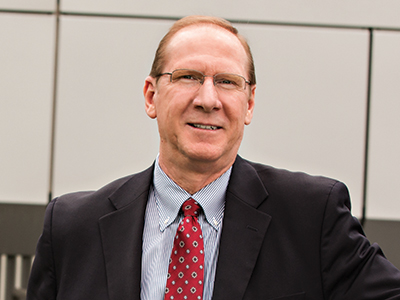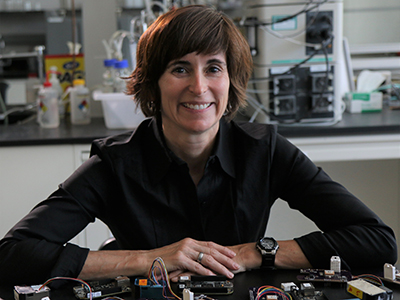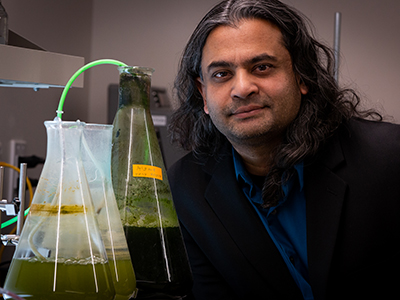
Whether it is designing biomedical sensors that detect tuberculosis or developing newer, more environmentally sustainable methods for traditional energy sources, research in the University of Utah’s Department of Chemical Engineering is growing into new, vital areas that will have an important impact on people’s quality of life.
In the last 10 years, the department has expanded in faculty, student enrollment, lab space and research activities to meet the mounting need for more engineers as the tech sector experiences explosive growth in Utah and the U.S.
“Utah has gone from 1,500 tech companies in the year 2000 to more than 8,000 today, which is just amazing,” said U chemical engineering chair and professor, Eric Eddings. “It’s a phenomenal story, and points to Utah as a place of great success and growth. The tech industry is now driving so much of the economy, and the University of Utah has been an important contributor to the tech revolution in the state. We provide cutting-edge research leading to start-up companies and the high-tech workforce our economy needs.”
In just the last six years, the department has hired 10 new tenure-line faculty members, focused on areas such as sensors for biomedical and environmental applications, nano materials, medical diagnostics, batteries, renewable energy integration and environmental sustainability, and air quality, among others. And many of these young researchers have already received national recognition for their projects.

A published study by assistant professor Tony Saad and professor and associate chair James Sutherland, for example, was profiled recently in The New York Times, detailing the air flow characteristics of symphony concert halls. Using computer simulations, the pair looked at the effect wind-instrument musicians have on the spread of air-borne viruses such as COVID-19. Associate professor Heather Holmes has been conducting research on better predicting the spread of wildfire smoke and its impact on local communities. And associate professor Kerry Kelly has been developing a network of personal air-quality sensors that can give a near real-time view of particulate matter over much of northern Utah. Assistant professor Kody Powell is working with industry to increase energy efficiency and to more effectively integrate renewable power generation within the existing electrical grid.
Meanwhile, several new researchers, including Bobby Mohanty, Tom Zangle, Michael Nigra, and Yunshan Wang are investigating new nano materials for the development of biosensors and methods for cancer and tuberculosis detection, the production of pharmaceutical products, and more, while Huanan Zhang is designing new nanomaterials for neural prosthetic devices. In addition, Mikhail Skliar, Jaye Magda and Marc Porter have pivoted their research interests in recent years and are also focusing on the interface between medicine and chemical engineering.
Research in established areas such as fossil fuels and other traditional energy resources continues to grow as well but has shifted toward environmentally-sustainable uses of fossil fuels and renewable resources such as geothermal energy. Eddings, for example, has been researching new uses for coal, such as converting coal pitch to lightweight carbon fiber material, to carbon quantum dots used in solar cells, and for carbon components in rechargeable batteries. Assistant Professor Tao Gao is researching new materials and technologies for next-generation batteries to facilitate more widespread use of renewables. Kevin Whitty is developing new technologies to produce energy from solid fuels like biomass and municipal solid waste, and Whitty, Philip Smith and others are researching methods to facilitate CO2 capture for carbon-neutral or even carbon-negative power generation.
Funded by one of the biggest grants ever received by the University of Utah, professor John McLennan is co-lead of the Frontier Observatory for Research in Geothermal Energy (FORGE) project, one of the world’s largest geothermal laboratories. The facility, located near Milford, Utah, is dedicated to developing the tools and technologies required for developing Enhanced Geothermal Systems (EGS) that can provide environmentally clean, renewable and sustainable energy anywhere in the world.

Professor Milind Deo is focused on developing more efficient methods of extraction of fossil fuels as well as carbon management research, including carbon capture, supercritical extraction, carbon dioxide enhanced oil recovery and sequestration. Associate professor Michael Hoepfner is using complex modeling and simulation tools for researching the origin and mechanisms of crude oil properties and phase behavior.
The department has also been making substantial capital improvements. It has initiated a multi-phase effort to modernize and expand its teaching laboratories on campus, which began with the construction of the new Peter and Catherine Meldrum Innovation Laboratory for first-year students. And there are current plans for the new 2,100-square-foot Process Technology Lab for junior-level students to facilitate our new curriculum that now includes integrated laboratory courses in the freshman, junior and senior years.
The department, along with the University of Utah’s College of Engineering as a whole, has experienced rapid growth the last decade in large part because of support from the Utah State Legislature through the Engineering Initiative, which has provided one-time and ongoing funds to build the engineering programs in Utah’s public universities.
“We’ve been fortunate here in Utah to have the support of the state for growth in engineering, and we as a department have been a part of that,” Eddings said. “We’ve been able to capitalize on that opportunity and hire some really outstanding young faculty who have been having a positive impact on our department.”